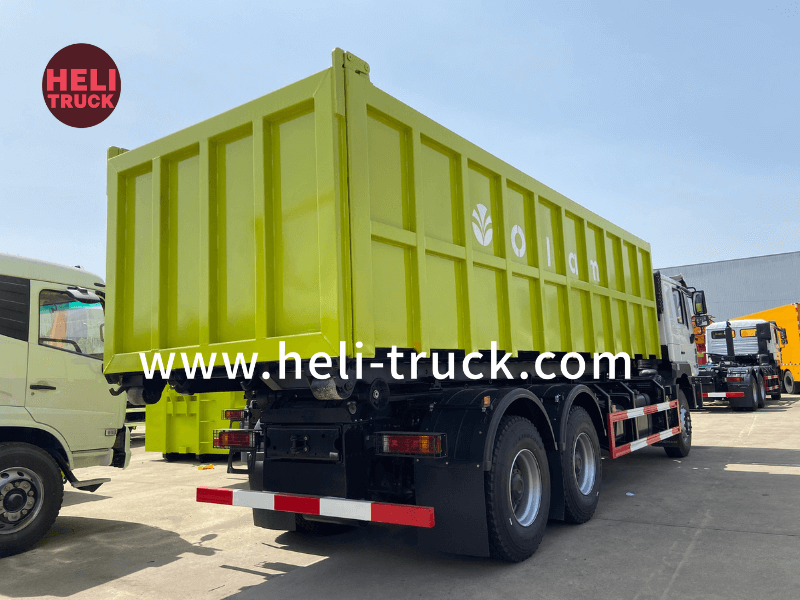Introduction
Garbage compactor trucks play a crucial role in waste management systems, efficiently collecting and compacting solid waste for transport to disposal sites. However, like any other heavy machinery, these trucks can experience technical issues that hinder their performance. In this comprehensive guide, we will explore common problems that garbage compactor trucks encounter and provide detailed troubleshooting steps to help operators and maintenance personnel address these issues effectively.
Understanding the Garbage Compactor Truck System
Before delving into troubleshooting, it is essential to have a basic understanding of how a garbage compactor truck operates. These trucks typically consist of a hopper, a compactor mechanism, a hydraulic system, and a storage container for compacted waste. The compactor mechanism compresses the collected waste to maximize the truck's carrying capacity, while the hydraulic system provides the power needed to operate the compactor.
Common Garbage Compactor Truck Problems
1. Hydraulic System Failure: One of the most common issues with garbage compactor trucks is hydraulic system failure. This can manifest as slow or erratic operation of the compactor mechanism, leaks in hydraulic lines, or unresponsive controls.
2. Compactor Jamming: Compactor jamming occurs when solid waste gets stuck in the compactor mechanism, preventing it from operating smoothly. This can lead to decreased efficiency and potential damage to the truck's components.
3. Electrical Malfunctions: Garbage compactor trucks are equipped with electrical systems to control various functions, such as the compactor mechanism, lights, and safety features. Electrical malfunctions, such as blown fuses, faulty wiring, or malfunctioning sensors, can disrupt the truck's operation.
4. Hopper Blockages: The hopper is the opening at the top of the compactor truck where waste is deposited. Blockages in the hopper can hinder the collection of waste and may result in spillage or overflow during operation.
5. Hydraulic Fluid Leaks: Hydraulic fluid leaks can occur due to damaged hydraulic lines, loose fittings, or worn seals. https://www.heli-truck.com/revolutionizing-farm-efficiency-the-unsung-heroes-of-agriculture-bulk-feed-trucks/ lead to a loss of hydraulic fluid but can also affect the performance of the hydraulic system.
Troubleshooting Steps
1. Hydraulic System Failure
- Check hydraulic fluid levels: Ensure that the hydraulic fluid reservoir is filled to the recommended level. Low fluid levels can cause the hydraulic system to operate inefficiently or fail altogether.
- Inspect hydraulic lines and fittings: Look for signs of leaks, cracks, or damage in the hydraulic lines and fittings. Replace any damaged components to prevent further issues.
- Test hydraulic pump pressure: Use a pressure gauge to measure the hydraulic pump pressure. Low pressure readings may indicate a faulty pump that needs to be repaired or replaced.
2. Compactor Jamming
- Clear the jammed waste: Stop the compactor mechanism and manually remove the jammed waste from the compactor chamber. Inspect the mechanism for any obstructions or debris that may be causing the jam.
- Lubricate moving parts: Apply lubricant to the moving parts of the compactor mechanism to reduce friction and prevent future jams. Regular maintenance and lubrication can help prevent this issue from recurring.
3. Electrical Malfunctions
- Check electrical connections: Inspect the wiring and connections in the electrical system for any loose or damaged components. Tighten connections and replace faulty wiring to ensure proper electrical flow.
- Test electrical components: Use a multimeter to test the continuity and voltage of electrical components, such as switches, relays, and sensors. Replace any malfunctioning components to restore the electrical system's functionality.

4. Hopper Blockages
- Clear blockages: Remove any debris or waste that is blocking the hopper opening. Use a shovel or broom to clear the blockage and ensure that the hopper is free of obstructions before resuming operation.
- Adjust hopper controls: Check the hopper controls to ensure that they are set to the correct position for waste collection. Improperly adjusted controls can contribute to hopper blockages and operational issues.
5. Hydraulic Fluid Leaks
- Identify the source of the leak: Inspect the hydraulic lines, fittings, and seals for signs of leakage. Use a clean rag to wipe down the components and locate the source of the leak.
- Repair or replace damaged components: Depending on the severity of the leak, repair or replace the damaged hydraulic lines, fittings, or seals. Use the appropriate tools and materials to ensure a secure and lasting repair.
Conclusion
Garbage compactor trucks are essential assets in waste management operations, but they can encounter various technical issues that require timely and effective troubleshooting. By understanding the common problems that these trucks face and following the recommended troubleshooting steps, operators and maintenance personnel can ensure that their garbage compactor trucks operate efficiently and reliably. Regular inspection, maintenance, and prompt repair of any issues are key to maximizing the performance and longevity of these vital vehicles.
